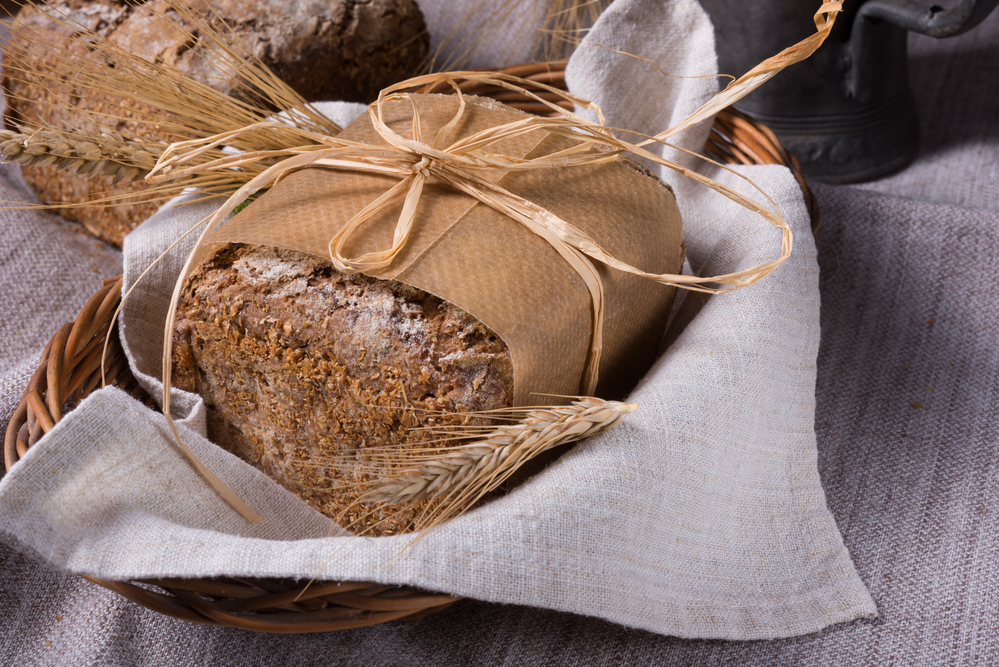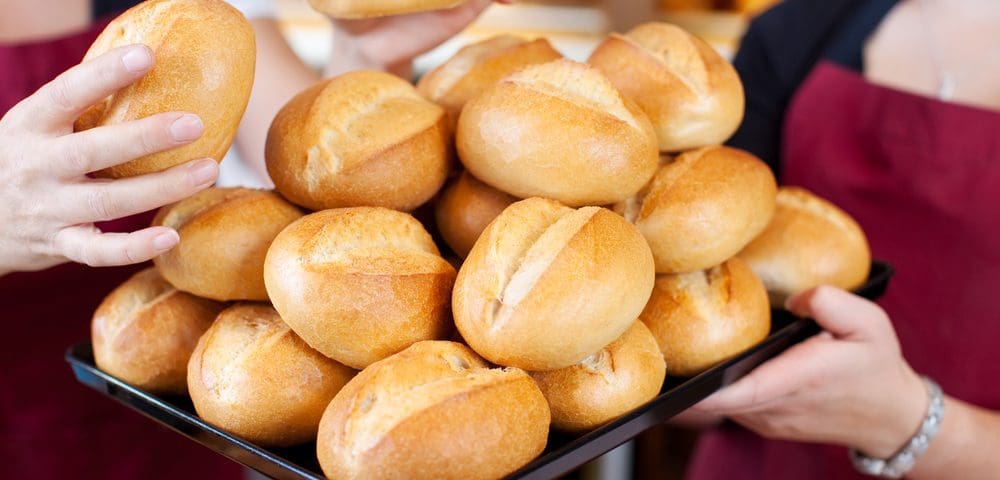
Furbeinfroh Premix
May 22, 2019
The Rise of Meatless Meat
June 28, 2019Bread and Roll Premix

Bread and Roll Premix
Sarah Jane Bread & Roll Premix is manufactured from medium high protein flour with added ingredients formulated to produce bread and rolls of excellent quality and consistency. It is suitable for a range of related products such as Vienna, Open Hearth Breads, Specialist Rolls to suit individual bakery requirements. It is an excellent base premix and with further additions of fruit, nuts or mixed grains a large variety of specialist breads & rolls can be made.
Method for Basic White Bread or Rolls
Ingredients
| Bread Maker | Commercial Mixer | ||
| Bread & Roll Premix | 600g | 10kg | 25kg |
| Yeast | 7g | 120g | 300g |
| Water | 370g | 6.2kg | 15.4kg |
Mixing
- Add Yeast to the weighed out Premix
- Add Water
Note: The water absorption of Flour may vary slightly. When adding water it is advised that not all water is added immediately. Add approximately 90% of the water initially and check dough – add remaining water until dough is at the required consistency.
- Mix as recommended below
| Mixer Type | Slow | Fast |
| Two Arm | 30 – 35min | |
| Cake | 10 – 12min | |
| Hi Speed | 0.5min | 3 – 3.5min |
| Spiral | 3min | 10 – 12min |
Proofing the dough
- When finished mixing/kneading, gently shape the dough into a round and place in a proving box, a lightly oiled bowl that is double the size of the dough. If using bowl seal with lid, plastic wrap or damp tea towel to prevent a skin from forming on the dough whilst resting.The ideal temperature for proofing/rising bread dough is around 30°C. Leave the dough to proof until it is double its original size – approximately 40-80 minutes, depending on the temperature of the proofing environment, temperature of ingredients and type of recipe.
- Once the dough has doubled in size, turn the dough out onto a lightly floured surface and gently knead the dough. Cover the dough again and allow it to rest until the dough again returns to the expanded size.
- Shape the dough to desired size or cut into suitable shape, approx 900gms for a standard bread tin,, and place in bread tins or on baking trays. Leave the bread to rise in a warm, moist environment until the dough almost doubles in size or reaches the top of the tin. The time may vary depending on environmental conditions – humidity and temperature
Baking
- Pre-heat the oven to 220°C
- Carefully place prepared loaves in the oven avoiding sudden movement which may cause dough to drop back.
- Bake at 2200C for approximately 25 minutes for a standard white loaf.
- Check if the loaf is cooked by tapping the bottom of the loaf – it should sound hollow if done, if it doesn’t then return it to the oven for another 5 – 7 minutes.
- Once cooked, place on a rack and allow it to cool for at least 30 minutes. If baked in tins bread should be removed from the tins and placed on racks immediately it is removed from the oven to prevent the loaf from collapsing.
Note: Oven temperature and temperature control may vary between 200°C and 230°C . The exact temperature required being dependent on the oven itself, type of bread and size and/or number of loaves. Typically the temperature of the oven should be set so that the loaves will start to “colour” in about twelve minutes after being placed in the oven.
Cooling And Wrapping Of Bread
The bread should be cooled on racks until the internal temperature of the loaf is below 35°C before wrapping or cutting. Typically this may take approximately 45-60 minutes depending on ambient conditions. This will allow the bread crumb to set and will prevent sweating or the loaf shape collapsing.


